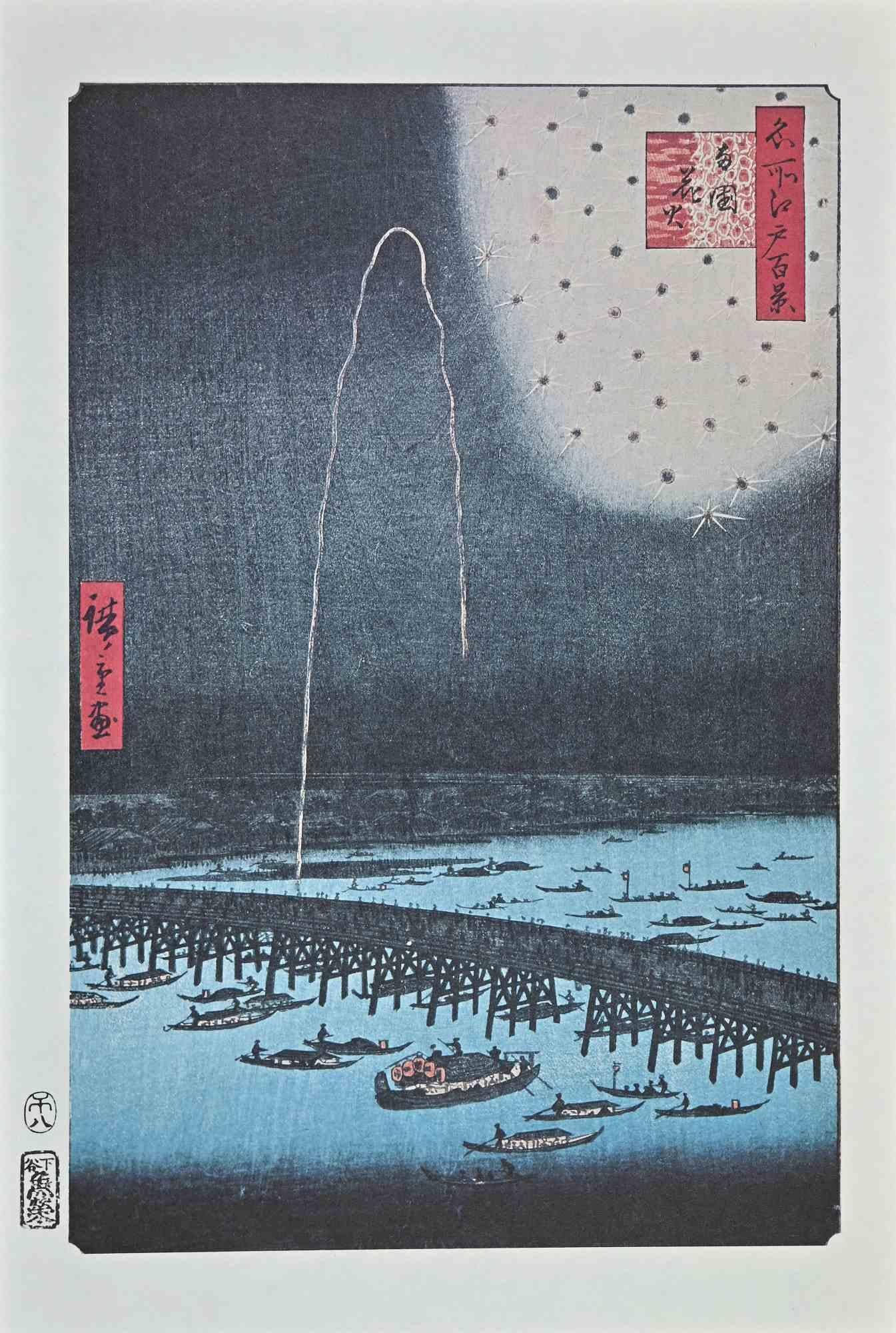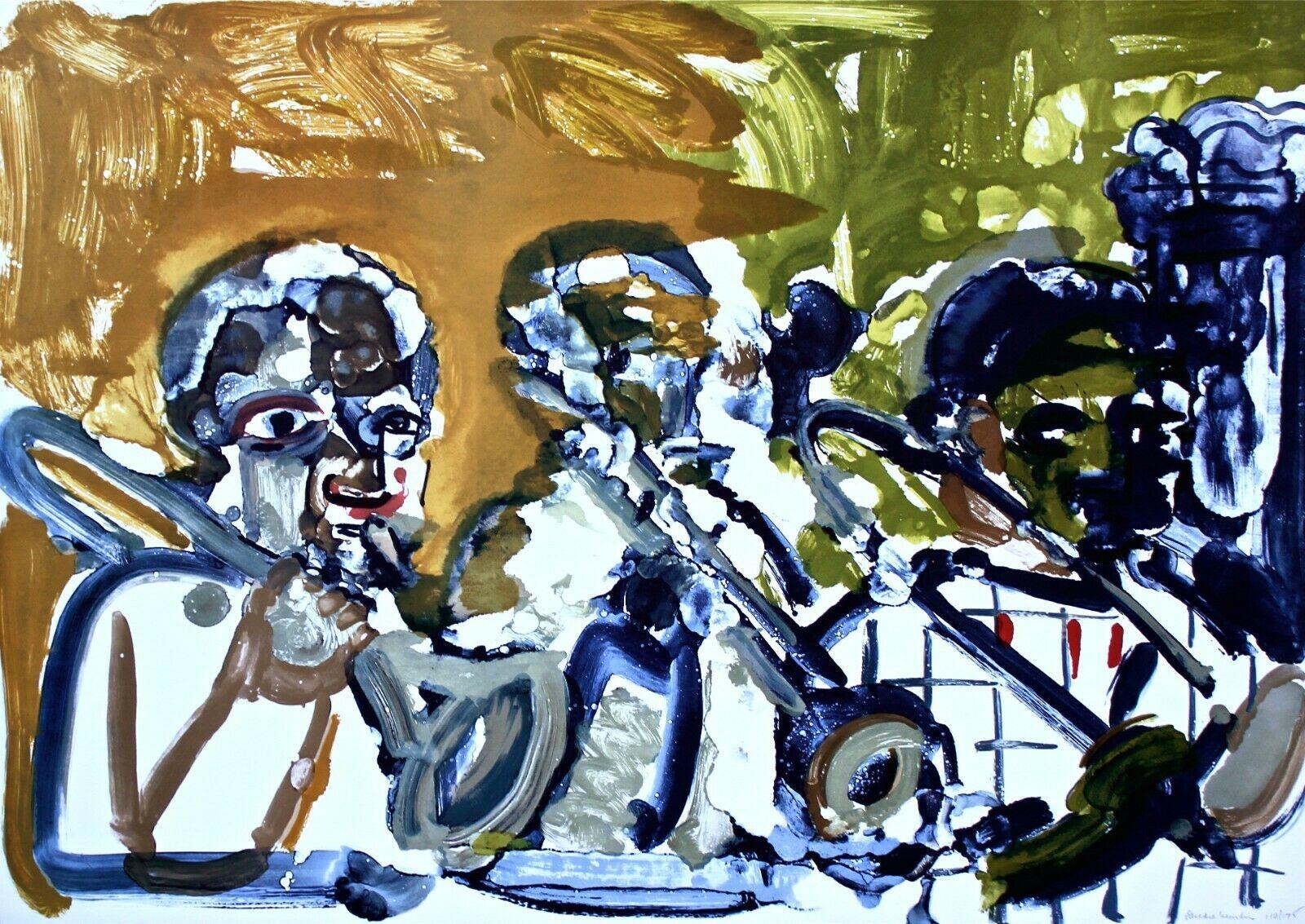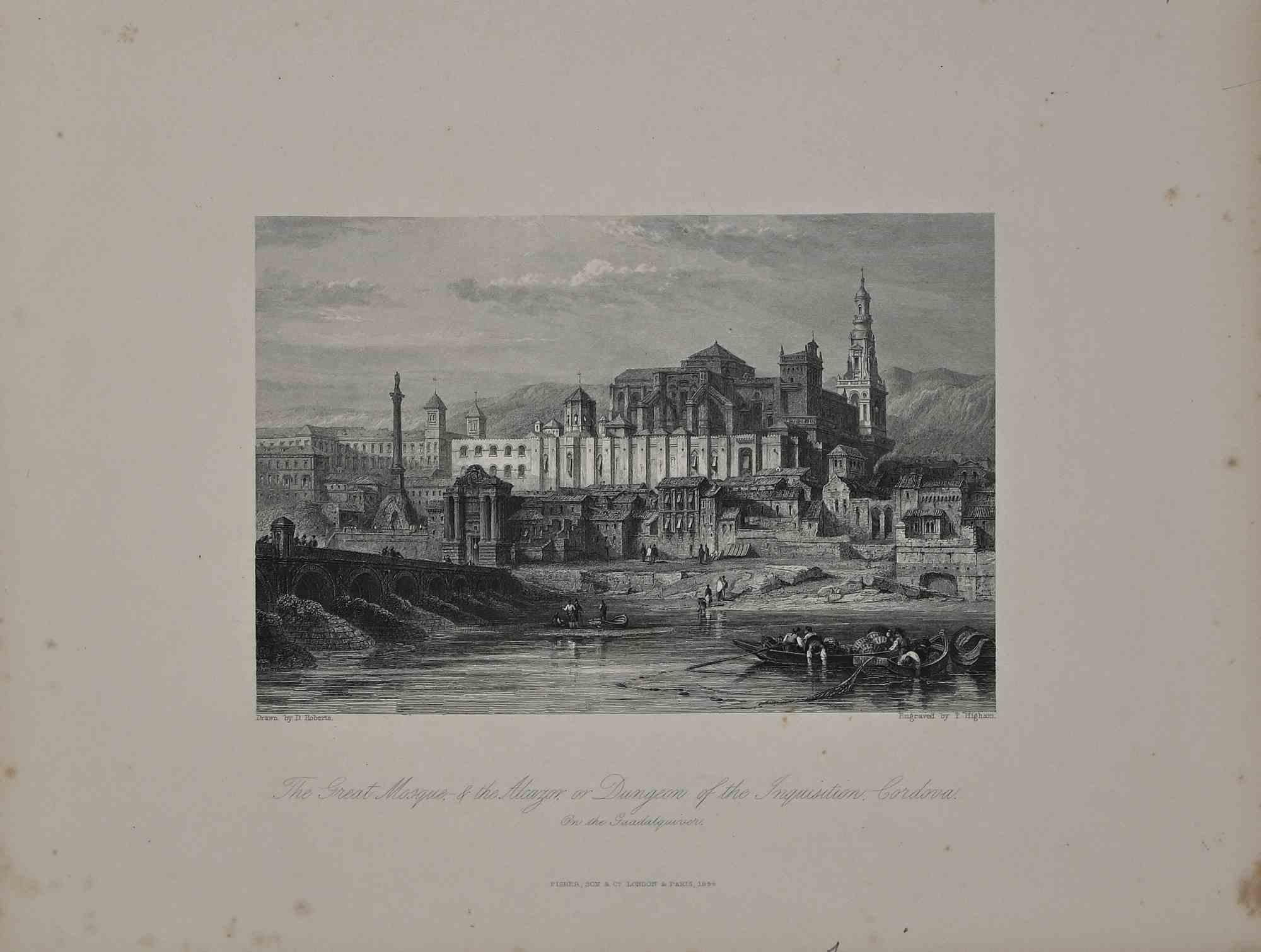Items Similar to Toulouse-Lautrec, Ecuyere de haute ecole, The Circus by Toulouse-Lautrec (after)
Want more images or videos?
Request additional images or videos from the seller
1 of 10
Toulouse-Lautrec, Ecuyere de haute ecole, The Circus by Toulouse-Lautrec (after)1952
1952
About the Item
Lithograph on wove paper. Unsigned and unnumbered, as issued. Good Condition; never framed or matted. Notes: From the volume, The Circus by Toulouse-Lautrec, 1952. Published the Paris Book Center, New York and André Sauret, Paris; printed by Fernand Mourlot, Paris, in an edition of one-thousand, five hundred and seventy, October, 1952. Excerpted from the folio, From early childhood Toulouse-Lautrec was attracted by the circus. It was, in fact, through a friend of his family, René Princeteau, himself a painter, that he acquired this taste while still very young. Princeteau was a painter of horses and their riders, both men and women, and he exerted quite an influence on Lautrec's early education. Despite the great difference in their ages, they got along splendidly and the circus became their favorite form of enter-tainment. Later, Lautrec paid frequent visits to the Molier and Fernando circuses as well as to the Nouveau Cirque. His strange silhouette with its long torso set on over-short legs could be seen standing close to the "rail" during training periods, or later, loafing about in the corridors. His retentive memory noted everything : the movements of the horses and their riders, the acrobats, the facial expressions of the clowns, an entire world of its own intensely alive and, for him, fascinating. He took few rough notes and only occasionally made a quick drawing of the grimaces of the famous clown, Footitt, whose sketches with the negro " Chocolat" as partner attracted the whole of Paris to the Nouveau Cirque. Lautrec had met Footitt, whom he admired very much, in a bar in the Rue Royale and, for a while, he used to go there to join him. But although Lautrec liked the spectacle of the circus, he also liked to go to bars and cafés, with the result that, at the beginning of the year 1899 he gave evidence of mental disorders. There were those who insisted even that he was mad; but this was not the case. He was seized with occasional fits of hallucination, following upon long moments of lucidity. His friend, Arsène Alexandre, said of him: " This strange, daring little man descended into Hell, but he came out of it with his own fur singed; for a time, alcohol, loathsome alcohol, ravaged the painter as it had his models". With the approval of his doctor, and to calm Lautrec's nerves, a plan was envisaged to send him on a voyage to Japan. In the end, however, he went to Doctor Semelaigne's nursing-home in Neuilly. This eighteenth-century house, called originally "Folie Saint-James", proved to be very hospitable. But Lautrec did not remain inactive. His solitude weighed on him, in addition to which he was determined to prove that his mind was not really affected. He asked for pencils and paper, and soon his room was transformed into a studio. Unfortunately, models were few, the house attendants being so very different from the creatures that peopled Montmartre. Should he return to his usual subjects? He had already portrayed too many bars and houses of ill-fame. It was here that he decided to depict the circus scenes that had always struck his fancy. So he set to work. It has been thought that at this period he worked from memory. This is undoubtedly true as regards the drawings in which Footitt, "Chocolat" and the woman-clown Cha-U-Kao are to be seen. But it is also possible, as M. Adhémar believes, that he executed others from nature. The explanation is a simple one : Lautrec's condition having rapidly improved, he was soon allowed to go out with an attendant. As it happened, the Molier circus, in the Rue Bénouville, was not far from Lautrec's nursing-home. He was surely accompanied. But he was able to sketch from life while the troupe was practising or, at least, return to the nursing-home and set down immediately what he had just seen. In many of these subjects it will, in fact, be noted that the benches are empty, as during a rehearsal, and those of the drawings that reproduce the riding exercices engaged in by Molier's pupils, Blanche Allarty and Anna Bradbury, show extraordinary precision. This fact was already noted by Maurice Joyant. In any case, Lautrec succeed in constituting little by little a complete series of thirty-nine drawings in black and colored crayons, all of which show great mastery and are in no way the work of a mad-man. All they show are certain exaggerations of proportion, but this is a question of artistic deformation and proves, as Miss Mongan has emphasized, "the integrity of his painter's faculties.” Lautrec set down the things that struck him with a humour that was all his own : the gentle movement of a rider's skirt, while the big horse continues to gallop peacefully around the arena; trained dogs, especially poodles, being drilled by a clown armed with a whip; or acrobats, so skillful and so true to stock, risking their lives for the public. Most of these drawings as, for instance, "the rearing horse," "the jockey,” and “the animal-trainer", are masterpieces of composition and movement. They denote an aristocratic vision of the circus that is quite different from that expressed by Rouault, a little later (I). The colored pencil which, in an awkward hand, can produce such weak effects, is used here with supreme freedom of movement. Lautrec uses too, occasionally, a china-ink wash as, for example, in the "negro playing the banjo". However, once these drawings were finished, Lautrec, who had also completed several lithographs, began to be bored, and took a general dislike for his fellow-patients whom he termed "too dis-gusting". Friends who called to see him, expecting to find him haggard and barely able to speak, now found themselves in the presence of a little man with a keen eye and a generally relaxed expression. His condition having shown regular improvement, he was therefore released. He was to retain, in fact, a rather pleasant memory of his stay at Saint-James. Alas, however, his taste for alcohol soon returned, dominating his entire existence. Meanwhile, what became of the drawings? Lautrec gave one, "the trainer-clown", to his friend Arsène Alexandre, with the following inscription, "Madrid, Easter 1899, to Arsène Alexandre. Later, a German named Heinrich Stahl, acquired this same drawing. As regards the thirty-eight others, Lautrec gave them away quite as generously to his close friend, Maurice Joyant, of whom he also made an excellent portrait in hunting costume. When Joyant died these drawings constituted part of his estate. A French art-patron, who bought them around I93I was obliged to part with all but three shortly afterwards. Finally, the majority were taken to America by the well-known art dealer, Knoedler, who disposed of them separately. However, in the early nineteen-hundreds Maurice Joyant, who was impressed by the high quality of this series of drawings, contracted with the printer Manzi for reproduction of twenty-two of them in intaglio-heliogravure, and an album was brought out in 1900s. Then, in view of the success of this early volume, a plan to make known to the public the remaining seventeen was set afoot. Owing to the efforts of Madame Dortu, Maurice Joyant's heir, a second album was published in 1932. The reproductions, this time by Daniel Jacomet, were made from phototype plates and colored by hand. Both these volumes have now become very rare. Today, in 1953 - and the interest that attaches to this event is only too evident - we are indebted to the publisher André Sauret, for finally being able to compile in this one volume, the thirty-nine drawings that compose the series " The Circus". Here the reproductions were made by the lithographer, Fernand Mourlot, whose mastery of the colored lithograph is once more manifested. The "pungency" of the lithographic process is indeed perfectly suited to the requirements of these drawings, and restores as well the spirit of Lautrec's works. —Charles PERUSSAUX, Attaché au Cabinet des Estampes de la Bibliothèque Nationale.
TOULOUSE-LAUTREC (1864-1901) was a French painter, printmaker, draughtsman, caricaturist, and illustrator whose immersion in the colourful and theatrical life of Paris in the late 19th century allowed him to produce a collection of enticing, elegant, and provocative images of the sometimes decadent affairs of those times. Born into the aristocracy, Toulouse-Lautrec broke both his legs around the time of his adolescence and, due to the rare condition pycnodysostosis, was very short as an adult due to his undersized legs. In addition to his alcoholism, he developed an affinity for brothels and prostitutes that directed the subject matter for many of his works recording many details of the late-19th-century bohemian lifestyle in Paris. Toulouse-Lautrec is among the painters described as being Post-Impressionists, with Paul Cézanne, Vincent van Gogh, Paul Gauguin, and Georges Seurat also commonly considered as belonging in this loose group. He influenced generations of artists including Picasso who had traveled to Paris where he at first imitated Toulouse-Lautrec's style.
- Creation Year:1952
- Dimensions:Height: 12.125 in (30.8 cm)Width: 9.25 in (23.5 cm)
- Medium:
- After:Henri de Toulouse-Lautrec (1864 - 1901, French)
- Period:
- Condition:
- Gallery Location:Auburn Hills, MI
- Reference Number:1stDibs: LU1465214306322
About the Seller
4.9
Gold Seller
These expertly vetted sellers are highly rated and consistently exceed customer expectations.
Established in 2002
1stDibs seller since 2021
865 sales on 1stDibs
Typical response time: <1 hour
- ShippingRetrieving quote...Ships From: Auburn Hills, MI
- Return PolicyA return for this item may be initiated within 1 day of delivery.
Auctions on 1stDibs
Our timed auctions are an opportunity to bid on extraordinary design. We do not charge a Buyer's Premium and shipping is facilitated by 1stDibs and/or the seller. Plus, all auction purchases are covered by our comprehensive Buyer Protection. Learn More
More From This SellerView All
- Arc de triomphe (Champs-Elysées), Paris Capitale, Maurice UtrilloBy Maurice UtrilloLocated in Auburn Hills, MILithograph on vélin Johannot paper. Inscription: Unsigned and unnumbered. Good condition. Notes: From the folio, Paris Capitale, 1955; published by Joseph Foret, Editeur d'Art, Paris...Category
1950s Modern Landscape Prints
MaterialsStencil, Lithograph
- la Tour Eiffel, Paris Capitale, Maurice UtrilloBy Maurice UtrilloLocated in Auburn Hills, MILithograph on vélin Johannot paper. Inscription: Unsigned and unnumbered. Good condition. Notes: From the folio, Paris Capitale, 1955; published by Joseph Foret, Editeur d'Art, Paris...Category
1950s Modern Landscape Prints
MaterialsStencil, Lithograph
- Au Musée du Louvre (Rue de Rivoli), Paris Capitale, Maurice UtrilloBy Maurice UtrilloLocated in Auburn Hills, MILithograph on vélin Johannot paper. Inscription: Unsigned and unnumbered. Good condition. Notes: From the folio, Paris Capitale, 1955; published by Joseph Foret, Editeur d'Art, Paris...Category
1950s Modern Landscape Prints
MaterialsStencil, Lithograph
- à Notre-Dame (La Cité), Paris Capitale, Maurice UtrilloBy Maurice UtrilloLocated in Auburn Hills, MILithograph on vélin Johannot paper. Inscription: Unsigned and unnumbered. Good condition. Notes: From the folio, Paris Capitale, 1955; published by Joseph Foret, Editeur d'Art, Paris...Category
1950s Modern Landscape Prints
MaterialsStencil, Lithograph
- Montmartre (Moulin de la Galette), Paris Capitale, Maurice UtrilloBy Maurice UtrilloLocated in Auburn Hills, MILithograph on vélin Johannot paper. Inscription: Unsigned and unnumbered. Good condition. Notes: From the folio, Paris Capitale, 1955; published by Joseph Foret, Editeur d'Art, Paris...Category
1950s Modern Landscape Prints
MaterialsStencil, Lithograph
- Montmartre (Place Saint-Pierre), Paris Capitale, Maurice UtrilloBy Maurice UtrilloLocated in Auburn Hills, MILithograph on vélin Johannot paper. Inscription: Unsigned and unnumbered. Good condition. Notes: From the folio, Paris Capitale, 1955; published by Joseph Foret, Editeur d'Art, Paris...Category
1950s Modern Landscape Prints
MaterialsStencil, Lithograph
You May Also Like
- Maurice de Vlaminck - House in Rueil - Original LithographBy Maurice de VlaminckLocated in Collonge Bellerive, Geneve, CHMaurice de Vlaminck Original Lithograph Signed in the plate 1958 Title: House in Beauce Dimensions: 22 x 27 cm Reference: Catalogue raisonné Walterskirchen 275 Condition : Excellent Maurice de Vlaminck (1876 - 1958) Maurice was three years old when his family moved from Paris to Vésinet. He first pursued the same musical career as his parents, who were both musicians, leaving his home as a trained double-bass player in 1892 to move to Chatou near Versailles. After absolving his military service in Vitré Maurice Vlaminck worked as a musician until he accidentally met André Derain in 1900. It was Derain who kindled Vlaminck's artistic ambitions. He decided to become a painter and rented an old hut in which he and Derain shared a studio. A crucial turning point in Vlaminck's artistic development was a visit to a van Gogh exhibition...Category
1950s Impressionist Landscape Prints
MaterialsLithograph
- Tombs of Ajax and Patroclus - Lithograph - 1862Located in Roma, ITTombs of Ajax and Patroclus is a lithograph realized in 1862. Good conditions. The artwork belongs to the Suite Uses and customs of all the peoples of the universe, or History of t...Category
1840s Modern Figurative Prints
MaterialsLithograph
- View of Warsaw - Lithograph - 20th CenturyLocated in Roma, ITView of Warsaw is an artwork realized by an unknown artist of the 20th Century. Black and white lithograph, hadsigned in the lower right margin. Unreadable signature. Sheet 17 x 2...Category
20th Century Modern Figurative Prints
MaterialsLithograph
- Toulouse Lautrec Original Lithograph Famous Political 1800s Collection SignedBy Henri de Toulouse-LautrecLocated in Milwaukee, WI"Lautrec Book: From Au Pied du Sinai written by Georges Clemenceau" lithographs created by the legendary Henri de Toulouse-Lautrec. This book, Au Pied...Category
1890s Post-Impressionist Figurative Prints
MaterialsLithograph, Mulberry Paper
- Woman at the Tub (Femme au tub)Located in Bournemouth, DorsetHenri de Toulouse-Lautrec (1864–1901) Woman at the Tub (Femme au tub) lithograph, 213/275, signed in print Image: 48.5 x 62.5 cm Frame: 69.5 x 81.5 cm Henri Toulouse-Lautrec (1...Category
1890s Realist Landscape Prints
MaterialsLithograph
- Ancient View of Chateau de Touars - Original Lithograph - 19th CenturyLocated in Roma, ITAncient View of Chateau de Touars is an original lithograph artwork realized by an Anonymous engraver of the 19th Century. Printed in the series of "France Pittoresque". Titled "...Category
19th Century Modern Figurative Prints
MaterialsLithograph





